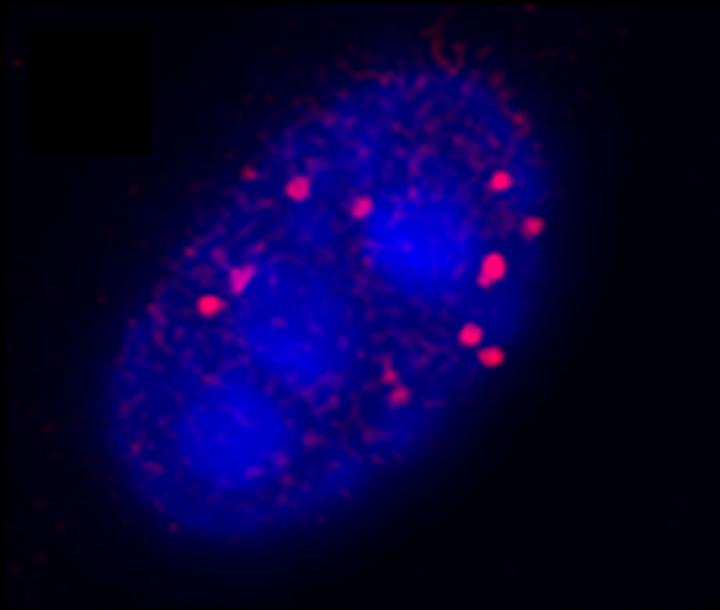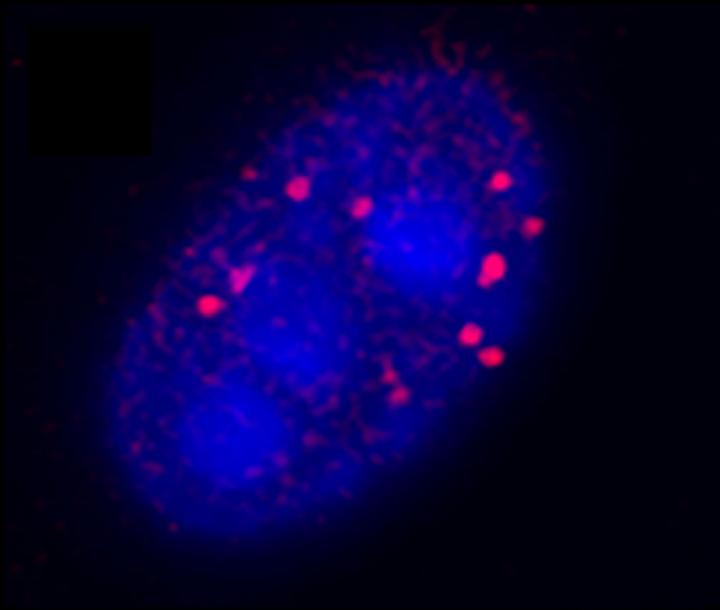
Credit: Miranda et al., 2017
Researchers have discovered that mice with Huntington's disease (HD) suffer defects in muscle maturation that may explain some symptoms of the disorder. The study, "Progressive Cl− channel defects reveal disrupted skeletal muscle maturation in R6/2 Huntington's mice," which will be published online November 29 in The Journal of General Physiology, suggests that HD is a disease of muscle tissue as well as a neurodegenerative disorder and that therapies targeting skeletal muscle may improve patients' motor function.
HD is a progressive, and ultimately fatal, disorder caused by a mutation in the huntingtin gene that results in the production of defective huntingtin RNA and protein molecules that disrupt various cellular processes. The cognitive and psychiatric disturbances associated with HD, including memory loss and mood swings, are thought to result from the death of neurons in the striatum and cerebral cortex. But some of the disease's motor symptoms, such as involuntary movements and muscle rigidity, could arise from the effects of mutant huntingtin in skeletal muscle.
Andrew Voss and colleagues previously found that mice with an early-onset form of HD showed skeletal muscle defects at late stages of the disease, particularly a decrease in the function of a protein called ClC-1, which conducts chloride ions into the cell. This appeared to be caused by defective processing of the messenger RNA encoding ClC-1 and contributed to muscle hyperexcitability, potentially causing some of the motor symptoms associated with HD. But the loss of ClC-1 function could simply be a late response to the death of neurons innervating skeletal muscle; whether the chloride channel is affected during the onset and progression of HD remained unclear.
In the new study, Voss and colleagues at Wright State University in Dayton, Ohio, and California State Polytechnic University in Pomona, California, examined their HD model mice throughout the course of the disease. They found that the RNA encoding ClC-1 was misprocessed in both HD and control mice when they were young, but, as they grew older, only healthy animals were able to start correctly processing the RNA to produce functional ClC-1. Thus, even before their motor symptoms began to appear, ClC-1 function was reduced in the skeletal muscle of HD mice compared with healthy, control animals.
This suggested that muscle maturation might be disrupted in HD mice. Voss and colleagues found that HD mice expressed a form of the muscle motor protein myosin that is usually only produced in newborn mouse muscle. Moreover, they identified similar defects in muscle maturation in a different strain of mice with adult-onset HD.
"Our results support the idea that HD is a myopathy as well as a neurodegenerative disease and may provide a new opportunity to improve patient care by targeting skeletal muscle tissue," Voss says. In addition, researchers and clinicians may be able to use the skeletal muscle defects as biomarkers to track the progress of HD, a much easier task than examining patients' brain tissue.
###
Miranda et al. 2017. J. Gen. Physiol. https://doi.org/10.1085/jgp.201611603
About The Journal of General Physiology
The Journal of General Physiology (JGP) features peer-reviewed research in biological, chemical, or physical mechanisms of broad physiological significance, with an emphasis on physiological problems at the cellular and molecular level. All editorial decisions are made by research-active scientists in conjunction with in-house scientific editors. JGP provides free online access to many article types from the date of publication and to all archival content. Established in 1918, JGP is published by The Rockefeller University Press. For more information, visit jgp.org.
Visit our Newsroom, and sign up for a weekly preview of articles to be published. Embargoed media alerts are for journalists only.
Follow JGP on Twitter at @JGenPhysiol and @RockUPress.
Media Contact
Ben Short
[email protected]
212-327-7053
@RockUPress
http://www.rupress.org/
############
Story Source: Materials provided by Scienmag





